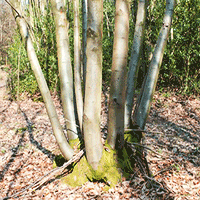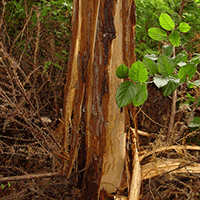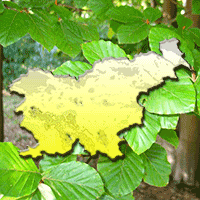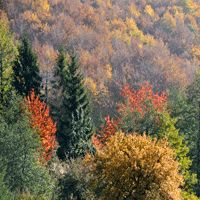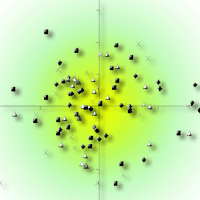
Long-term outcome of precommercial thinning on floristic diversity in north western New Brunswick, Canada
HA Cole (1) , SG Newmaster (2), L Lanteigne (3), D Pitt (4)
iForest - Biogeosciences and Forestry, Volume 1, Issue 5, Pages 145-156 (2008)
doi: https://doi.org/10.3832/ifor0470-0010145
Published: Nov 25, 2008 - Copyright © 2008 SISEF
Research Articles
Abstract
The Green River spacing trials were established between 1959 and 1961 to study the long-term growth and development of balsam fir (Abies balsamea (L.) Mill.) and red spruce (Picea rubens Sarg.) in response to precommercial thinning (PCT). Three nominal spacings (1.2 m, 1.8 m, 2.4 m) and an unthinned control were applied in a randomized complete block design with 5 replicates to regenerating stands, an average of 8 years after harvest. Our study examines floristic diversity associated with these treatments approximately four decades later. Floristic diversity was assessed with several alpha diversity indices as well as multivariate analysis to compare community composition. Specific a-priori contrasts compared plant diversity among a) control and average of the wider spacings (1.8 m and 2.4 m), b) control and the narrowest spacing (1.2 m), and c) the narrowest spacing and the widest spacing. Our results indicate that there were no appreciable differences among the treatments across all measures of plant diversity investigated. As such, we conclude that the forest understory, as represented by the unthinned plots, was analogous in the thinned plots at time of stand maturity. Vegetation response to PCT treatments is inconsistent in the published literature, but this can be attributed to differences in thinning intensities, recovery age or the type of forest ecosystem studied. We conclude that PCT is a variable silvicultural tool that could be used to attain both economic productivity and biodiversity conservation goals.
Keywords
Biodiversity, Forest ecology, Precommercial Thinning, Silviculture, Tree Spacing, Plant Diversity
Authors’ Info
Authors’ address
Swiss Federal Research Institute WSL, Biodiversity and Conservation Biology, Zürcherstr. 111, CH-8903, Birmensdorf (Switzerland)
Floristic Diversity Research Group, OAC Herbarium, University of Guelph, Guelph, N1G 2W1 - Ontario, (Canada)
Canadian Forest Service, Atlantic Forestry Centre, Hugh John Fleming Forestry Centre, P.O. Box 400, E3B 5P7 - Fredericton, New Brunswick (Canada)
Canadian Forest Service, Great Lakes Forestry Centre, 1219 Queen St. E., Sault Ste. Marie, P6A 5M7 - Ontario (Canada)
Corresponding author
Paper Info
Citation
Cole HA, Newmaster SG, Lanteigne L, Pitt D (2008). Long-term outcome of precommercial thinning on floristic diversity in north western New Brunswick, Canada. iForest 1: 145-156. - doi: 10.3832/ifor0470-0010145
Paper history
Received: Oct 02, 2008
Accepted: Nov 13, 2008
First online: Nov 25, 2008
Publication Date: Nov 25, 2008
Publication Time: 0.40 months
Copyright Information
© SISEF - The Italian Society of Silviculture and Forest Ecology 2008
Open Access
This article is distributed under the terms of the Creative Commons Attribution-Non Commercial 4.0 International (https://creativecommons.org/licenses/by-nc/4.0/), which permits unrestricted use, distribution, and reproduction in any medium, provided you give appropriate credit to the original author(s) and the source, provide a link to the Creative Commons license, and indicate if changes were made.
Web Metrics
Breakdown by View Type
Article Usage
Total Article Views: 58860
(from publication date up to now)
Breakdown by View Type
HTML Page Views: 49736
Abstract Page Views: 3349
PDF Downloads: 4488
Citation/Reference Downloads: 97
XML Downloads: 1190
Web Metrics
Days since publication: 6255
Overall contacts: 58860
Avg. contacts per week: 65.87
Citation Metrics
Article Citations
Article citations are based on data periodically collected from the Clarivate Web of Science web site
(last update: Mar 2025)
Total number of cites (since 2008): 10
Average cites per year: 0.56
Publication Metrics
by Dimensions ©
Articles citing this article
List of the papers citing this article based on CrossRef Cited-by.
References
Establishment report - Cleaning and thinning young fir, 1961 Project M-443-59. Internal report, Department of Northern Affairs and National Resources, Forestry Branch, Maritimes District, Fredericton, New Brunswick, pp. 29.
Gscholar
Ecological effects of variable-retention harvests in the northwestern United States: the DEMO study. Forest Snow and Landscape Research 78: 119-137.
Gscholar
Establishment report- Cleaning and thinning young fir, 1960 Project M-443-59. Internal report, Department of Northern Affairs and National Resources, Forestry Branch, Maritimes District, Fredericton, New Brunswick, pp. 28.
Gscholar
Establishment report - Cleaning and thinning young fir, 1960 Project M-443-59. Internal report, Department of Northern Affairs and National Resources, Forestry Branch, Maritimes District, Fredericton, New Brunswick, pp. 5.
Gscholar
Progress report - Cleaning and thinning young fir, 1959 - Project M-443-59. Internal report, Department Forestry, Maritimes District, Fredericton, New Brunswick, pp. 18.
Gscholar
Research by the Federal Forestry Branch in the Green River Project. The Forestry Chronicle 36: 265-277.
Gscholar
Timber supply in the Pacific northwest: managing for economic and ecological values in Douglas-fir forest. Journal of Forestry 94: 4-7, 35-37.
Gscholar
LOGS: a pioneering example of silvicultural research in coast Douglas-fir. Journal of Forestry 95: 19-25.
Gscholar
Responses of forest vegetation to varying levels and patterns of green-tree retention: an overview of a long-term experiment. Northwest Science 73: 27-44.
Gscholar
Flora of New Brunswick (2nd edn). University of New Brunswick Press, Fredericton, New Brunswick, pp. 695.
Gscholar
Early response of balsam fir to spacing in northwestern New Brunswick, Maritimes Forest Research Centre, Maritime Forest Research Center Information Report M-X-129, pp. 36.
Gscholar
Effects of spacing on balsam fir: 25-year results from the Green River spacing trials. In: Proceedings of the precommerical thinning workshop, March 19, 1987, Hugh John Fleming Forestry Complex. Canada/New Brunswick Forest Renewal Agreement Publication (Murray TS, Cameron MD eds). Canadian Forest Service- Maritimes, P.O. Box 4000, Fredericton, New Brunswick, pp. 59-75.
Gscholar
Ecological Methodology (2nd edn). Addison Wesley Longman, Inc. Don Mills, Ontario.
Gscholar
Changing forests, shifting values, and chronosequence research. Northwest Science 72: 9-17.
Gscholar
SAS® System for Mixed Models. SAS Institute Inc., Cary, NC, pp. 633.
Gscholar
A forest classification for the Maritime Provinces. Proceedings of the Nova Scotian Institute of Science 25: 86-167.
Gscholar
PC-ORD. Multivariate analysis of ecological data (version 3.20). MjM Software Design, Gleneden Beach, OR, USA.
Gscholar
Fertilization and thinning effects on a Douglas-fir ecosystem at Shawnigan Lake: 24-year growth response. British Columbia Ministry of Forests; Forest Research Development Agreement Report 269, ISSN: 0835-0752.
Gscholar
Ministère des Ressources naturelles du Québec. Une stratégie- Aménages pour miew protéger le forêts. Direction des programmes forestiers, Québec.
Gscholar
Managing for biodiversity in young Douglas-fir forests of western Oregon. USGS, Biol. Res. Div., Biol. Sci. Rep. 76.
Gscholar
An ecological context for regenerating multi-cohort, mixed-species red pine forests. USDA Forest Service, North Central Research Station, Research Note NC-382.
Gscholar
The statistical sleuth: a course in methods of data analysis. Duxbury Press, Belmont, CA (USA).
Gscholar
Does intermediate disturbance increase species richness within deciduous forest understory? In: “Modern ecology: basic and applied aspects” (Esser G, Overdieck D eds). Elsevier, Amsterdam, pp. 363-374.
Gscholar
Forest regions of Canada. Department of the Environment, Canadian Forestry Service, Publication No. 1300, Ottawa, pp. 172.
Gscholar
Field guide to the forest ecosystem classification for northwestern Ontario. Ontario Ministry of Natural Resources, Northwest Science and Technology, Thunder Bay, Ontario Field Guide FG-03.
Gscholar
Professional base system software for statistical analysis. SPSS Inc. Chicago (USA).
Gscholar
Silvicultural systems and regeneration methods: current practices and new alternatives. In: “Creating a forestry for the 21st century” (Kohm K, Franklin JF eds). Island Press, Washington, DC (USA), pp. 151-165.
Gscholar
CANOCO reference manual and user’s guide to CANOCO for Windows. Center for Biometry, Wageningen, The Netherlands.
Gscholar
Effects of forest management on understory and overstory vegetation: a retrospective study. US Forest Service Pacific Northwest Research Station General Technical Report PNW-GTR-488.
Gscholar


